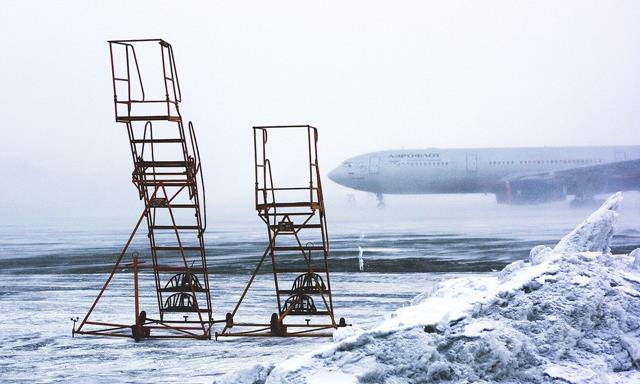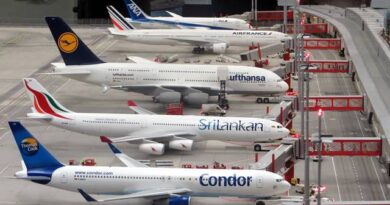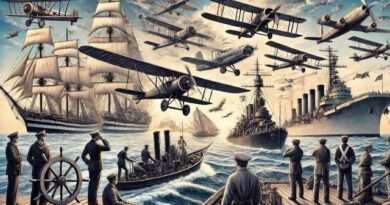How do Airplanes keep fuel from freezing ?
Airplanes encounter extreme temperature fluctuations during flights. At high altitudes, the air temperature can drop to very low levels, raising concerns about fuel freezing. What happens if fuel freezes? Thankfully, advancements in aviation technology have led to effective solutions and precautions to address this issue. Let’s delve into these methods to understand how airplanes keep their fuel from freezing and ensure safe and efficient operations.
Freezing Temperature of Fuel
Now that we know the temperature lapse rates in order to find what the air temperature is for various altitudes, what is the freezing temperature of aviation fuel? Well, it’s actually far below the freezing temperature of water.
According to AOPA, here is the average freezing temperature for popular jet fuels:
- Jet A (most commonly used in the United States): -40°C (-40°F)
- Jet A-1 (used worldwide): -47°C (-53°F)
- Jet B (most commonly used in Northern Canada for very cold temperatures): -60°C (-76°F)
- No. 3 Jet Fuel (most commonly used in China): -47°C (-53°F)
- TS-1 (most commonly used in Russia): -50°C (-58°F)
When the planes rise to normal cruising altitude, the outside air temperature can be -57 °C and even colder. This situation causes the fuel stored in the wings to cool down in time. If the freezing temperature drops 6 (six) degrees below, aircraft fuel will take the wax consistency and pumping fuel action to the engines of the aircraft will stop.
So there are some measures against this in planes. Briefly:
- Extremely hot engine oil is circulated adjacent to fuel pipes through the system called “Fuel Oil Heat Exchanger” for cooling purposes. In this way, both the temperature of the engine oil is reduced and the fuel oil is heated.
- The fuel in the fins is periodically pumped into the relatively hot central fuel tank located under the body of the aircraft.
- The hot hydraulic pipes of the aircraft are designed to circulate around the fuel tanks.
Since the freezing of the fuel is extremely dangerous, the temperature of the fuel is constantly controlled with various sensors installed. And it can be checked from monitors. When a potential risky situation arises, pilots can increase the temperature of the fuel in the tanks by several maneuvers/procedures (by increasing the speed of the airplane or by reducing the flight altitude).
British Airways Boeing 777-200ER Incident: Fuel Freezing Leads to Engine Power Loss
On January 17, 2008, a British Airways Boeing 777-200ER experienced a sudden loss of engine power during its final approach to London Heathrow Airport. This incident, originating from Beijing Capital International Airport, underscores the importance of addressing fuel freezing in passenger aircraft.
Incident Overview
During the descent phase, just moments before landing, the aircraft’s engines lost power, forcing the pilots to make a hard landing. The root cause? Freezing in the fuel pipes.
Cause of the Accident
Investigations revealed that the aircraft flew through extremely cold air currents, reaching temperatures as low as -74°C. Even with modern safety measures, a small amount of water in the fuel tanks can lead to icing. In this case, ice formed in the fuel pipes and subsequently obstructed the Fuel Oil Heat Exchanger system (FOHE).
Critical Details
As the aircraft descended and the pilots reduced engine power, ice broke loose and clogged the FOHE system. When the pilots increased power, this blockage caused both engines to lose power simultaneously, just 150 meters above the ground.
Emergency Landing and Aftermath
The plane began to glide towards the runway but landed several hundred meters short. Remarkably, all 136 passengers and 16 crew members were safely evacuated. This near-tragic event highlighted a critical vulnerability in the FOHE system.
System Improvements
In response to the incident, significant upgrades were made to the FOHE system. The entrance sections were redesigned to handle greater ice accumulation, ensuring enhanced safety for future flights.
This incident serves as a vital reminder of the continuous need for innovation and vigilance in aviation safety measures.

Conclusion
The British Airways Flight 38 incident serves as a stark reminder of the importance of robust systems to prevent fuel from freezing in flight. Modern aircraft utilize advanced technologies like Fuel Oil Heat Exchangers (FOHE) and water scavenge systems to mitigate the risks posed by ice formation. Additionally, fuel additives and regular fuel circulation procedures further enhance safety, especially in extreme cold conditions. These measures ensure that aircraft can operate safely even in the harshest environments, maintaining engine performance and passenger safety. Continuous improvements and rigorous testing of these systems underscore the aviation industry’s commitment to addressing the challenges of fuel freezing, thereby enhancing overall flight safety.
References and Further Reading Links
- British Airways Flight 38 Incident – Wikipedia: Detailed information on the incident, investigation findings, and subsequent changes made to the fuel systems of Boeing 777 aircraft. https://en.wikipedia.org/wiki/British_Airways_Flight_38
- Aviation Fuel Systems – Federal Aviation Administration: Technical details on the fuel systems of modern aircraft, including the Fuel Oil Heat Exchanger (FOHE) and other safety measures. https://www.faa.gov
- How Airplanes Keep Fuel from Freezing – Boeing Aero Magazine: An article explaining the methods and technologies used by Boeing to prevent fuel freezing in their aircraft. https://www.boeing.com/commercial/aeromagazine/articles/2011_q1/2/
- Ice in Aviation Fuel – Skybrary: An overview of the causes, effects, and prevention methods of ice formation in aviation fuel systems. https://www.skybrary.aero/articles/fuel-system-icing
- Understanding Fuel System Icing Inhibitors – Environmental Protection Agency (EPA): Information on the use of fuel system icing inhibitors and their role in aviation safety. https://www.epa.gov/fuels-registration-reporting-and-compliance-help/understanding-fuel-system-icing-inhibitors


